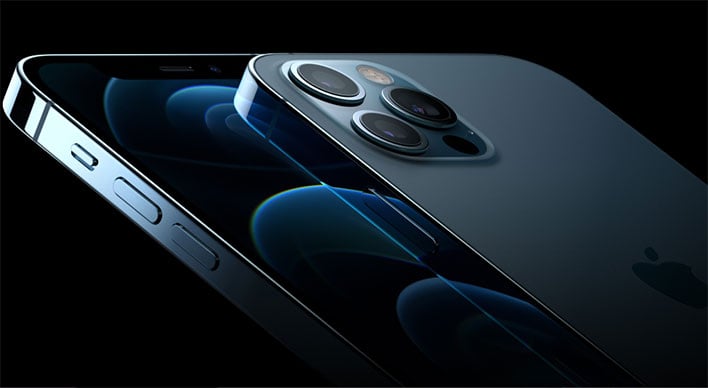Alleged Apple A15 Bionic GPU Benchmarks Show Killer Performance And More Hard Throttling

Apple is getting ready to introduce a new round of iPhone devices, and it is widely believed the iPhone 13 lineup will wield a next-generation A15 Bionic system-on-chip. The question is, what kind of performance uplift will it deliver over the A14 Bionic? Perhaps a quite a sizable one, at least in graphics, if a leaked benchmark score turns out to be true.
We have often said that Apple manages to do more with less, when it comes to squeezing performance out of its handsets that don't necessarily boast the most cores or memory. That's not to say Apple should get a pass when it skimps on specs, especially for its priciest handsets. But regardless of where any platform and brand loyalties may reside, Apple's iPhones have consistently offered up strong performance.
That appears to be the case again with the upcoming iPhone 13. A user on the Client forums claims to have achieved 198 frames per second in the GFXBench Manhattan 3.1 test, on an A15 Bionic sample from July. That is an impressive score, if proves to be true.
How impressive? The A14 Bionic typically peaks at around 120 frames per second in the same benchmark. So that's around a 65 percent jump in graphics performance, in this particular benchmark. And as for Samsung's upcoming Exynos 2200 SoC with an AMD RDNA GPU on board, it is rumored to achieve around 180 frames per second.
This bodes well for the iPhone 13, though there is a bit of a catch—performance throttling. We wrote about this last year, with regards to iPhone and Android devices. We found that the GPU in Apple's silicon proved to be an "absolute performance monster" and "easily able to dispatch its Android rivals" in 3DMark's Wild Life test, but there's a "steep drop-off in performance" in extended benchmark runs.
The bad news is, it looks like Apple's tendency to throttle hard will carry over to the A15 Bionic. However, the good news is, performance is still excellent. According to this leak, after throttling, the chip goes from 198 frames second to 140-150 frames per second.
That's still well ahead of the A14 Bionic. But of course this is but a single benchmark, and leaked one at that. As always, we'll reserve judgement until we've had a chance to test things out for ourselves, on finalized silicon.

